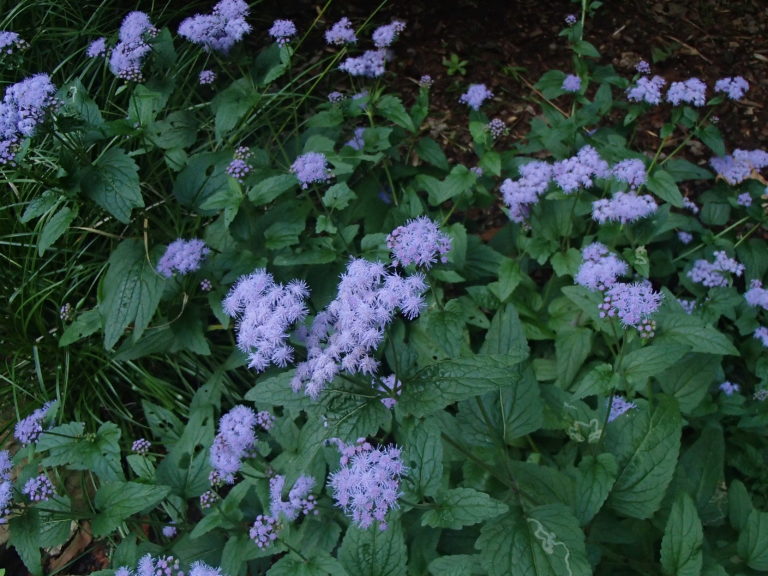Blue Mistflower is a shrub-like herbaceous perennial native to the south-central and eastern portions the U.S. In NC, is is present in most non-mountainous counties. Growing two to three feet tall and as wide, it has opposite, triangular-shaped leaves and masses of tiny, whimsical, fluffy, bright blue-purple disc flowers in clusters, totally lacking in ray flowers. It stays in bloom through most of the hottest part of summer and well into fall. Blue Mistflower spreads by rhizomes and can be aggressive in the right (or wrong) growing conditions. It should be divided in early spring to control its spread if grown in a perennial border, but it can be allowed to spead as a groundcover in a less controlled siting. It grows well in full sun, with sufficient moisture, but in our experience it tends to stay in bloom longer if given partial shade. Formerly called Eupatorium coelestinum.
NURSERY HOURS
Wednesday: 10-4 Thursday: 10-6 Friday-Saturday: 10-4 Sunday: 12-4
Conoclinium coelestinum

Key Info
Scientific Name: Conoclinium coelestinum (L.) DC.
Common Names: Blue Mistflower, Hardy Ageratum, Blue Boneset
Family Names: Asteraceae (Composite, or Daisy Family)
Plant Type: Herbaceous perennial
Flower Color: Blue
Special Characteristics: Reported to be deer resistant., Rhizomatous, Attracts bees, Attracts butterflies, Attracts birds
Additional Info
Habit: Upright, shrubby, well branched perennial; branches may droop at full height, basal rosette
Height: 1'-3'
Spread: 1'-3'
Soil Conditions: Moist to wet, sandy, loam, or clay.
Leaves: Oppositely arranged, oval to cordate leaves, coarsely-toothed, heavily veined, up to 3” long.
Flowers (or reproductive structures: Blue or purple, tight 1-3" clusters (corymbs) of flower heads, each flower head comprised of 40-50 florets with thread-like divided style, creating a fuzzy texture.
Fruit: Florets develop in late summer/fall into achenes with tufts of hair for wind distribution.
Natural Distribution: Woods edges, stream banks, wet meadows, ditches.
USDA Hardiness Zone: 5 to 10
USDA Wetland Indicator Status in NC: FAC
Pollination: Bees, butterflies, other insects
Wildlife Connections: The flowers attract long-tongued bees, butterflies, and skippers; also short-tongued bees, various flies, moths, and beetles. These insects seek nectar primarily, although the bees often collect pollen. Insects that feed on Eupatorium spp. (Bonesets) may also feed on Mistflower. Mammalian herbivores rarely consume Mistflower because of its bitter foliage (Illinoiswildflowers.info)
Propagation: By division or from seed (3 months stratification).
